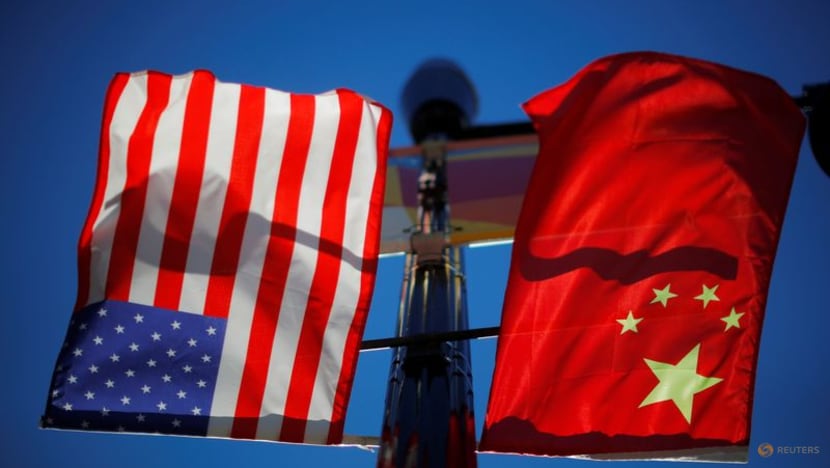CNA Explains: What's next for US-China trade ties, after temporary tariff truce?
Negotiators from both sides have agreed to establish a dialogue mechanism for further talks, and US President Donald Trump says he will speak to his Chinese counterpart Xi Jinping soon.


This audio is generated by an AI tool.
The United States and China agreed on Monday (May 12) to temporarily cut massive tariffs imposed on each other’s goods.
Washington will cut tariffs on imports from China to 30 per cent from 145 per cent for 90 days, while Beijing will slash duties on US imports to 10 per cent from 125 per cent for the same period.
Representatives from both sides met over two days in Geneva, agreeing to establish a dialogue mechanism to continue trade and economic discussions. US President Donald Trump on Monday said he would speak with his Chinese counterpart Xi Jinping soon.
How significant is the deal?
Dan Wang, China director at the Eurasia Group, a political risk consultancy, said the reduction in tariffs was a “giant surprise” and a positive start for both countries.
She added that China is trying to avoid a prolonged deflation and an economic slowdown which could deter long-term business investment.
The Chinese job market has been deteriorating for more than a year and that economic pain is one factor for entering into talks with the US, said Wang.
But she cautioned that China will only make concessions if it sees them as useful for gaining long-term benefits, such as focusing on enlarging market share in high-end manufacturing.
The US-China relationship has been marked by long-term competition, with both sides not likely to back down.
“Chinese leaders have a very long-term view on being a stronger voice (on) the world stage and for the US, (that is) a threat,” said Wang.
However, she stressed that both sides are heavily integrated, with China as a producer and the US as a consumer.
Trump wants to reduce or eliminate the trade balance, but it would be quite impossible for China to do so completely, said observers.
The US ran a trade deficit with China worth approximately US$295 billion in 2024.
One possible partial victory on that front would be for Beijing to revalue its currency and seek financing opportunities for Chinese firms aiming for a listing in the US.
Wang added that increasing investments from Chinese firms may improve the trade balance, but warned that long-term investments would still require a secure environment.
Will it lead to a sustainable resolution?
Jayant Menon, a visiting senior fellow at the ISEAS – Yusof Ishak Institute, called the temporary reduction in tariffs “a welcome move” but slightly unexpected.
He said this is “a ceasefire, basically with some troop withdrawals,” cautioning against being too carried away by the cuts.
Menon said even with the reduction in duties, it is still a “rise of protectionism” caused by the imposition of the tariffs in the first place.
“Even with this sharp reduction, we are in a worse position than we were before Trump took office for the second time. So, 30 per cent is still significant,” he added.
He noted that 90 days may not be enough to reach a comprehensive deal that addresses barriers to trade on both sides. These include intellectual property issues, the role of state-owned enterprises in China, and export controls on the US side.
Menon said despite the tariff pause, it is highly unlikely that decoupling will reverse.
“The Trump administration has made it very clear they want to balance trade. That is their ultimate objective, and that is never going to happen,” he said. “So whatever is agreed may soon be amended if the objective is not realised.”
He added that businesses should continue to pursue their diversification plans and avoid relying on any single country.
What's the impact on trade activity?
Deborah Elms, head of trade policy at philanthropic organisation Hinrich Foundation, believes that while both the US and China are calling it a victory on their own terms, it is still too early to tell the actual outcome of the negotiation.
“So what we've done is we've gone back not all the way to where we were in January, but closer to where we were on ‘Liberation Day’ on Apr 2,” she added.
Elms said the three-month pause is not likely to affect any long-term investment decisions, but short-term consumer demand might pick up.
“There will be a lot more purchases… of things like Halloween decorations, Christmas ordering… in order to try to get it (into) the US before this 90-day pause expires,” she said.
Still, she remained cautious about how much of this pause may translate into trade activity, as trade routes and container deliveries need restarting.
“We don't have ships currently on the water in the numbers that we had back in January,” added Elms.
She said business operations have been paralysed by the uncertainty caused by the tariffs, and firms may still be reluctant to increase their orders.
While the tariffs for Chinese goods have been reduced to 30 per cent, Elms said this is still a painful increase in duties for US consumers, who may still cut back on discretionary spending like Christmas shopping.
She added that these surprise tariff reductions could be a sign that the pain from economic decoupling had severely affected the population and businesses.
Elms hoped the pause is enough for progress to be made regarding the tariffs, but remained cautious over the outcome.
“There is no guarantee that these tariff rates that we currently have are going to stick. They could go down… but they could also go back up again,” she said.













